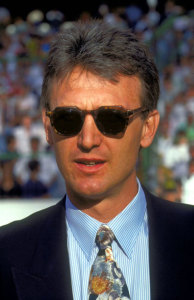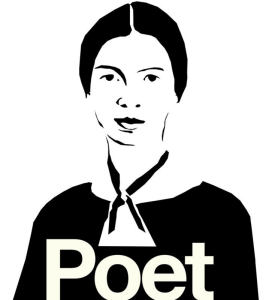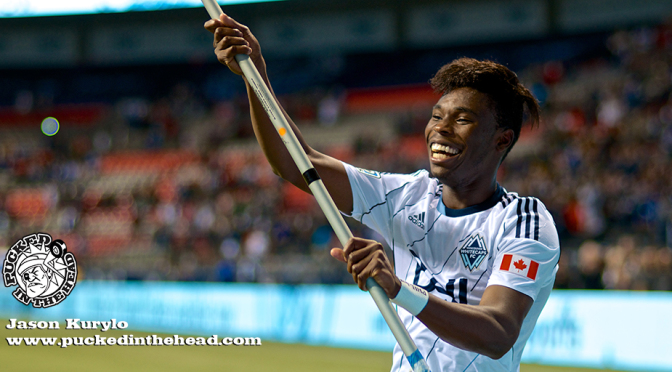
As Benito Floro begins the onerous task of hauling the Canadian Men’s National Team — kicking and flailing like Doneil Henry playing fullback — out of the year-long nadir that began with 8-1 and saw Les Rouges fail to score even once in 2013, there is a feeling of wrongness about even trying to hold this discussion. “A World Cup qualification,” we all cry, channeling the timeless incredulity of Jim Mora, “I just hope we can win a game!” But time marches on, and the abysmal 2013 plunged Canada far enough down the CONCACAF rankings that we find ourselves just half a year away from participating in the minnow round of yet another World Cup qualifying cycle. Is there hope this time?
Of course there is.
Hope, as Emily Dickinson said, is a bird that won’t shut the hell up even when we want to suffer in silence. (She used prettier words, but I believe I have captured the essence of her poem. I have placed it, in its entirety, at the bottom of this post, both to appear smarter than I actually am and because it’s a nice poem.) It sings to us, and worms its way into our consciousness, raising our expectations so that even expected losses are crushing. We try to roast the bird with logic and cynicism, but the cursed fowl refuses to die. The bird of hope has been singing a little louder for Canadian soccer fans recently, as there’s been positive news on both the club and country fronts.

Tweet, chirped the bird a couple of weeks ago, as Canada’s U20 men took off for Europe. Whistle chirp, a 2-2 draw against England on British soil, and a pair of victories over Russia and the USA on neutral Spanish ground. Three results, and all of them against decent to good national programs. Then, before we could even catch our breath, the senior team had managed an ugly draw in Panama. (The Central American Ugly Draw sounds like an obscure species of finch from Nicaragua, but is actually an incredibly rare Canadian soccer result.) They finished the year with only one loss, and that a not-at-all-embarrassing 1-0 defeat to the excellent Columbia. Perhaps not since the Gold Cup win of 2000 have male soccer players in this country managed such a stretch of results. That tells you all you need to know about the mental fortitude of those brave Voyageurs who have followed this country’s soccer fortunes for decades.
The warbles of the bird grow louder when we look at the clubs of the players who managed those U20 results. Whither mighty Unattached FC? Not to be found here. Sure, there remain a few players learning their craft in the nether regions of European football. Alex Comsia is currently affiliated with RC Strasbourg of the French third division. Jordan Hamilton is on loan at Portuguese second-division side Trofense. The bulk of these kids, though, are for the first time in recent memory Canadians playing for Canadian professional clubs. Three of those clubs, most recently the Vancouver Whitecaps, have elicited a veritable storm of birdsong — I acknowledge that I may now have overextended this theme — by announcing that they will field a USL Pro squad to compliment their MLS teams in 2015.
USL Pro has taken a completely different approach to growth from the second-division NASL. Where the NASL — whose quality of play is not appreciably better than USL Pro — has focused on becoming a legitimate challenger to MLS, USL Pro has taken an “if you can’t beat ’em, join ’em” approach, and allowed their league to be filled with MLS ‘B’ teams and players on loan. It was long rumoured that the Canadian Soccer Association was opposed to having Canadian clubs in this league, perhaps because such clubs would negatively affect future attempts at forming a Canadian soccer league. Ultimately, the CSA has decided to make exceptions for the three MLS clubs, likely because of the farm-team nature of the arrangement. They’ve allowed the clubs in with restrictions designed to grow the game in this country. Each of the three Canadian USL clubs will be required to maintain two quotas: six of eleven players in each starting lineup, and 50%+1 of the whole roster must be eligible for the Canadian National Team. Alain Rochat types who have a passport but aren’t eligible to represent the country will not suffice. That’s 18 guaranteed starting spots for CMNT-eligible players, and anywhere from 27 to 45 roster spots, beginning in 2015.
I think the launch of the Whitecaps’ USL team is a bit of a mixed bag. Slated to play at Thunderbird Stadium, a good half hour from some parts of Vancouver, let alone the ‘burbs, the team seems unlikely to draw well. Russell Berrisford has already more than nailed the comical blandness of Whitecaps FC 2, as the team will be marketed. I’m also on the fence about whether it’s a good idea to charge for something that is primarily a development opportunity. As frequent Whitecaps critic Duane Rollins put it, when you’re charging people to see a product, the focus becomes results, not development. There are definite positives, however.
The club overcame the breakdown of negotiations with at least one municipality to get the club up and running for 2015. General admission should help the atmosphere, by letting like-minded fans congregate unobstructed. The “starting eleven” group of the first 1100 season ticket holders will have input into some of the gameday decisions, notably which jersey the team will wear. And most importantly, it solidifies the pathway from residency to first team. The crucial intermediate stage has been lacking in Canadian soccer since time immemorial. Now the likes of Bustos, Froese and Carducci, who have a ways to go to crack the MLS lineup on a regular basis, won’t wither on the bench until the club parts ways with them. *cough* Bryce Alderson *cough* That frequent playing time in a professional league will hopefully propel the next generation swiftly into the ranks of both the Whitecaps first team and the senior national team
Les Rouges are not good, but they’re getting better. They’ll have to play two nail-biting home-and-home series against CONCACAF nobodies just to get back to the stage they were knocked out of in 2012, but this should not be beyond them. When that semifinal stage rolls around in a year and a half, there is the distinct possibility that the roster won’t consist of a collection of clubless journeymen, but rather a relatively young group with a recent U20 World Cup and steady playing time in a half-decent professional league under their belt. Names like Adekugbe, Bustos, Gasparotto, Hamilton and Petrasso could be joining names like Jackson, Johnson, Teibert and Osorio to fill in some of the gaping holes in the current senior roster. So, is there hope for a 2018 World Cup qualification? Yeah. Damn it, I’m going to regret this, but yeah.
I’ve heard it in the chillest land –
And on the strangest Sea –
Yet – never – in Extremity,
It asked a crumb – of me.
Emily Dickinson

